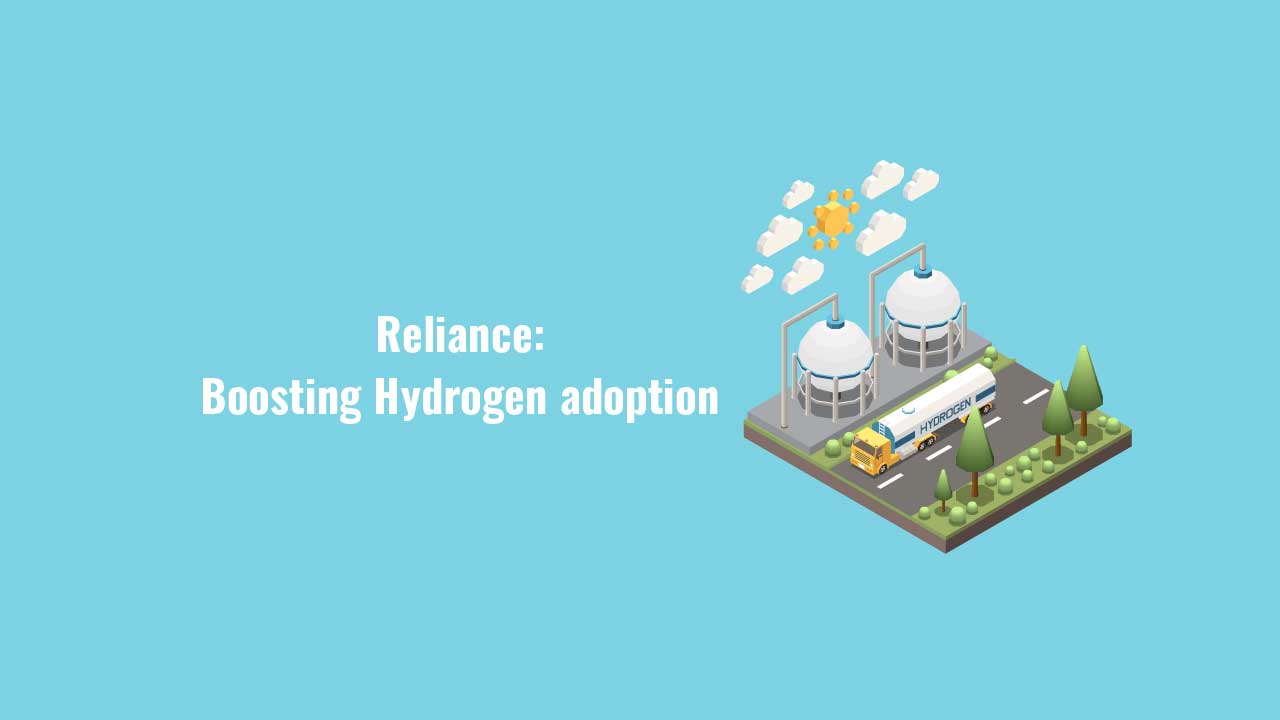Market Prediction For Tomorrow 19 March 2025
Reliance: Boosting Hydrogen adoption

Energy security has come to the forefront globally and renewables will play a leading role in boosting domestic energy security. Reliance is aiming to provide the resources behind the evolution of India's energy transition and the world's hydrogen ecosystems.
India is now moving in step with the rest of the world on hydrogen development after lagging on most decarbonization technologies over the past decade. India imports 41% of its primary energy requirements and has committed to cut Scope 2 emissions in half by 2030.
Reliance’s Role in Boosting Hydrogen adoption:
Reliance is planning to be among the most integrated green hydrogen players globally. It already has made strides by acquiring REC solar- for growing inhouse solar panel manufacturing and got capabilities in energy storage in India with ownership/stakes in Ambri (liquid metal technology), Lithium Werks (LFP), and Faradion (Sodium-Ion technology).
Reliance's solar panel capacity once developed can be leveraged internally to power its refining and chemicals complex and to help the production of hydrogen considering its proximity to the sea and existing water management infrastructure at Jamnagar.
Reliance is also planning to export green hydrogen to key markets where it supplies gasoline and diesel, especially countries like Singapore, which will have the highest carbon tax in Asia by 2030 at S$80/ton. It can also supply green hydrogen to its telecom towers and existing KG gas consumers, as well as to the industrial belt of Gujarat via the East-West Pipeline, with which it has take-or-pay contracts. Its green hydrogen manufacturing will also be complemented by the existing blue hydrogen infrastructure that gasifiers will be providing (including carbon capture).
While B2C applications will be far out in green Hydrogen adoption, Reliance’s plan for setting up 5,500 retail fueling outlets will accelerate the adoption of green hydrogen, especially considering the presence along highways of Hydrogen-blended CNG for trucks and long-distance buses. Global companies like Hyzon are developing solutions for the same, which Reliance can capitalize on as well.
Reliance has hived off pet-coke gasifiers into a separate subsidiary with a tolling model approach to converting pet-coke and coal as inputs into higher value-added syngas, hydrogen, and CO2, which can be used in downstream chemical manufacturing.
The key risks for hydrogen:
Globally, hydrogen as a fuel is still in the early stages of adoption and India is no different. Technologies and the pace of adoption are highly dependent on the government's policy framework, which is still evolving. A slow pace of policy push could drive downside risks to green hydrogen adoption and also slow the pace of green hydrogen being competitive versus alternatives like gas.
India's adoption of gas and electric has been a lot slower than anticipated and this does increase the risk for the pace of value creation for Reliance as well and would push the energy business NAV towards our bear case scenario. Also, global competition for electrolyzer manufacturing is rising with announced capacity rising to 41GW ~5x current levels. This poses a risk to Reliance's export economics.
Reliance's Green Hydrogen Boost:
The contribution of renewables and gas will move from 23% in 2021 to about 40% of India's energy consumption by 2030. Hydrogen and the associated ecosystems of solar panels, batteries, and policies will form an important part of this energy transition that Reliance is looking to provide resources for. Also, India has an opportunity, which the government has been focused on as well, to export hydrogen (in form of green ammonia) globally.
Reliance Industries has signed an MoU with Stiesdal for the completion, development, and subsequent manufacturing of electrolyzer in India. A HydroGen Electrolyzer is being developed by Stiesdal A/S and licensed to Reliance New Energy Solar Limited.
Electrolyzer demand in India:
Start Investing in 5 mins*
Get Benefits worth Rs. 5100 | Rs. 20 Flat Per Order | 0% Brokerage
NTPC, India's largest electricity generator, sees hydrogen resolving the intermittency issue of renewables by means of storing excess generation in nonpeak periods. NTPC is looking to run hydrogen buses in Delhi and Ladakh, which are at the development stage. In a pilot project, NTPC has been able to produce green hydrogen at greater than $3/kg and targets to bring it to greater than $2/kg in the near term and gradually to $1/kg. NTPC plans to deploy a part of its 4.75GW renewable capacity at Khavada Gujarat for producing green hydrogen, which will be exported. NTPC has commenced work on hydrogen-based microgrids and is carrying out pilot projects on green ammonia and green methanol, while hydrogen blending in natural gas (5% blending in Dadri plant) has been started with Gujarat Gas as well.
Hydrogen for industrial use could be used internally by Reliance's Jamnagar refinery and Reliance could potentially look at supplies of hydrogen in its own fuel stations via H-CNG as well as for fuel cell electric vehicles (FCEVs). However, as Reliance moves to green hydrogen, this output will be integrated into producing fertilizers and certain nitriles, of which India is net short.
- Performance Analysis
- Nifty Predictions
- Market Trends
- Insights on Market
Trending on 5paisa
03
 5paisa Research Team
5paisa Research Team
Market Outlook Related Articles
Disclaimer: Investment in securities market are subject to market risks, read all the related documents carefully before investing. For detailed disclaimer please Click here.

 Tanushree Jaiswal
Tanushree Jaiswal




